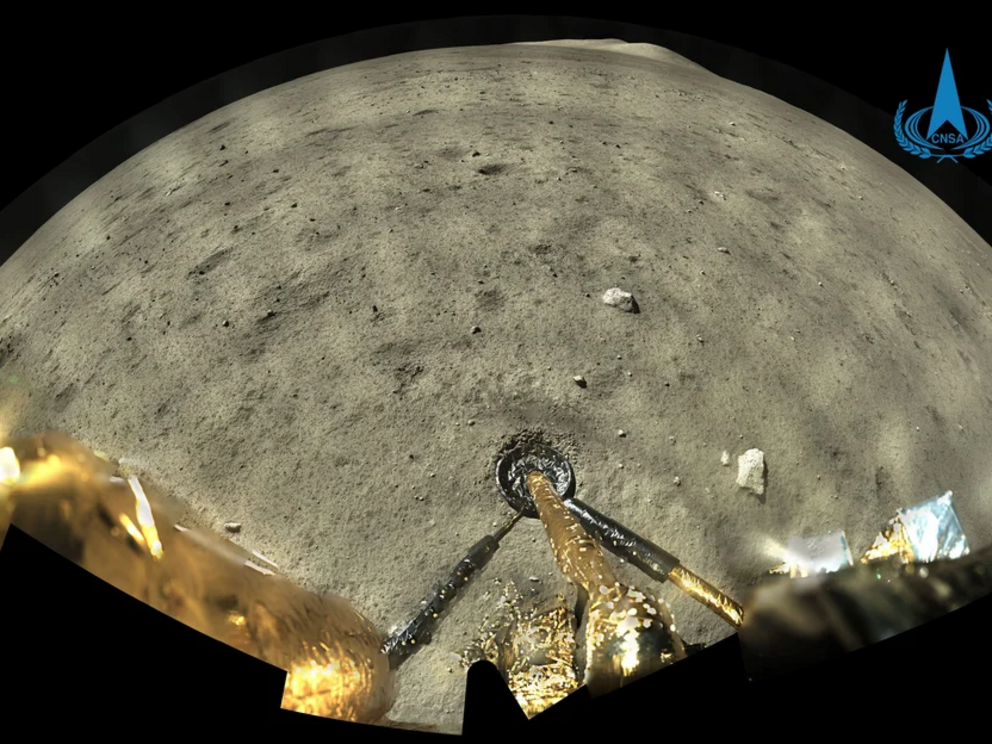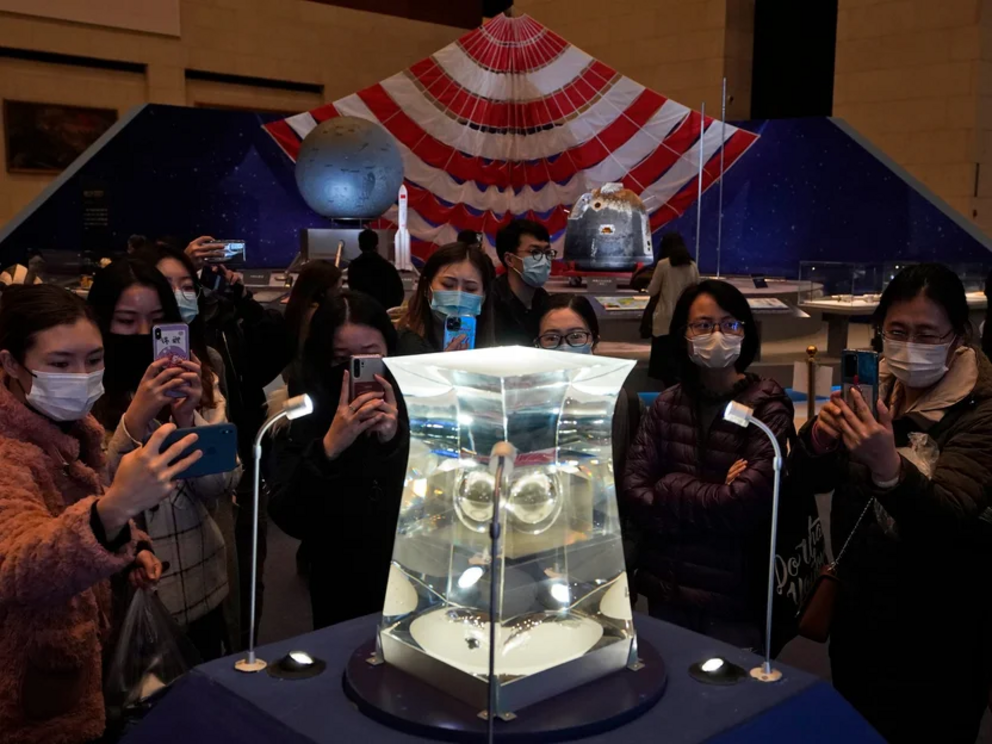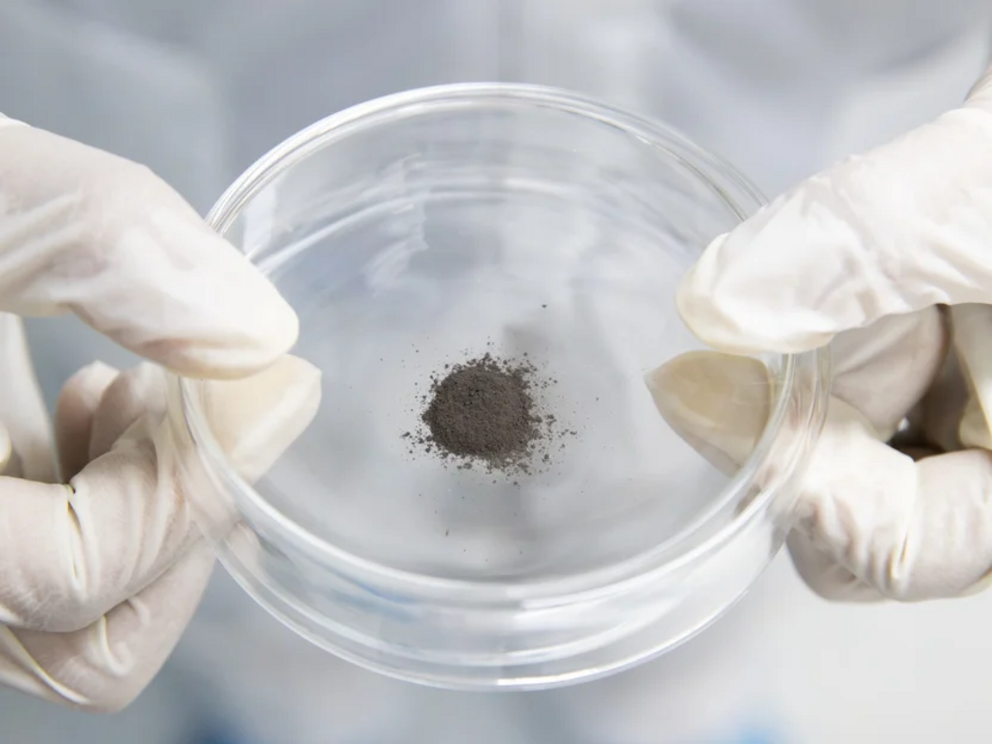China brought the first moon rocks back to Earth in 45 years. They hint at mysterious volcanic eruptions
Lunar samples from the Chang’e-5 mission at the Institute of Geology and Geophysics of the Chinese Academy of Sciences in Beijing, October 15, 2021. Jin Liwang/Xinhua/Getty Images
- China’s Chang’e-5 mission brought rocks from the moon to Earth for the first time in 45 years.
- The rock samples are the remnants of ancient lava flows and date back 2 billion years.
- That’s nearly 1 billion years later than scientists thought the moon could have had volcanic eruptions.
Volcanoes on the moon were spewing lava much more recently than scientists thought. But precisely how that happened is a mystery.
That’s what researchers concluded after analyzing rocks that China’s Chang’e-5 spacecraft gathered from the moon in late 2020 and delivered back to Earth.
They’re the first lunar samples brought back since the Apollo missions in 1976. But they undermine the findings from analyses of those earlier samples. The Apollo rocks, along with some samples from the Soviet Union’s Luna 24 mission, indicated that the moon cooled off and its volcanoes stopped erupting roughly 3 billion years ago.
“The general assumption was that the moon is such a small body compared to Earth and Mars, for example, so it cooled off more quickly and stopped producing volcanics,” Bradley Jolliff, a planetary scientist at Washington University in St. Louis who helped conduct the research, told NBC News.
But the rocks that Chang’e-5 brought back are about 2 billion years old, and they’re volcanic. That means lava flows must have paved over the region where the spacecraft landed, nearly 1 billion years later than scientists thought was possible.
 A panoramic image taken by Chang’e 5 after it landed.
A panoramic image taken by Chang’e 5 after it landed.
That surprising finding was published earlier this month in the journal Science. Then on Tuesday, a new study of the Chang’e-5 samples published in the journal Nature also determined those rock samples to be 2 billion years old.
What’s more, two accompanying studies this week showed that the new moon samples are surprisingly low in water and radioactive elements – both of which make volcanic eruptions easier. Water lowers the melting point of rock, and radioactive potassium, uranium, and thorium provide heat to melt magma. Both were present in higher concentrations in the Apollo and Luna moon samples.
Altogether, the new papers pose “a real conundrum,” according to Qing-Zhu Yin, a geochemist at the University of California, Davis, who was not involved in the research. Yin told Science that these studies raise questions about how a body as small as the moon could “support volcanic eruptions in the late stage of life.”
The reason the findings are baffling is that the moon has no atmosphere or magnetic field to retain the heat needed for volcanic activity. But a few ideas are circulating as to how heat stuck around so long. One is that the moon’s soil might have been thick enough to hold onto heat for a billion years longer than scientists initially thought. Another is that the moon might have been heated by tidal forces from Earth, since the planet’s gravity could have stretched and relaxed the moon’s interior as it orbited. A third possible explanation is an impact from a large asteroid or comet, since in some cases that can cause a volcanic eruption.
Moon samples are critical for decoding lunar history
Chang’e-5 launched to the moon in November. It landed near an inactive volcano in a region called Oceanus Procellarum, which is paved in a type of black volcanic rock called basalt. The lander then gathered more than 4 pounds (2kg) of lunar rock, taking some material from the surface and some from 6 feet (1.83m) deep into the lunar crust.
 Visitors to the National Museum in Beijing look at a display of lunar rock samples from China’s Chang’e 5 mission, March 12, 2021.
Visitors to the National Museum in Beijing look at a display of lunar rock samples from China’s Chang’e 5 mission, March 12, 2021.
Chang’e-5 then packaged the samples inside a capsule and launched it back to Earth. The capsule landed in Mongolia in December.
Since past missions harvested so little rock from the moon, scientists expect to learn much more from future samples like the Chang’e-5 rocks. China’s next lunar mission, Chang’e-6, aims to launch to the far side of the moon in 2024 and return even more samples.
“If the moon was a continent-sized object, the Apollo and Luna samples would be like sampling only one state. Imagine if that’s all we know about an entire continent,” Jolliff said.

